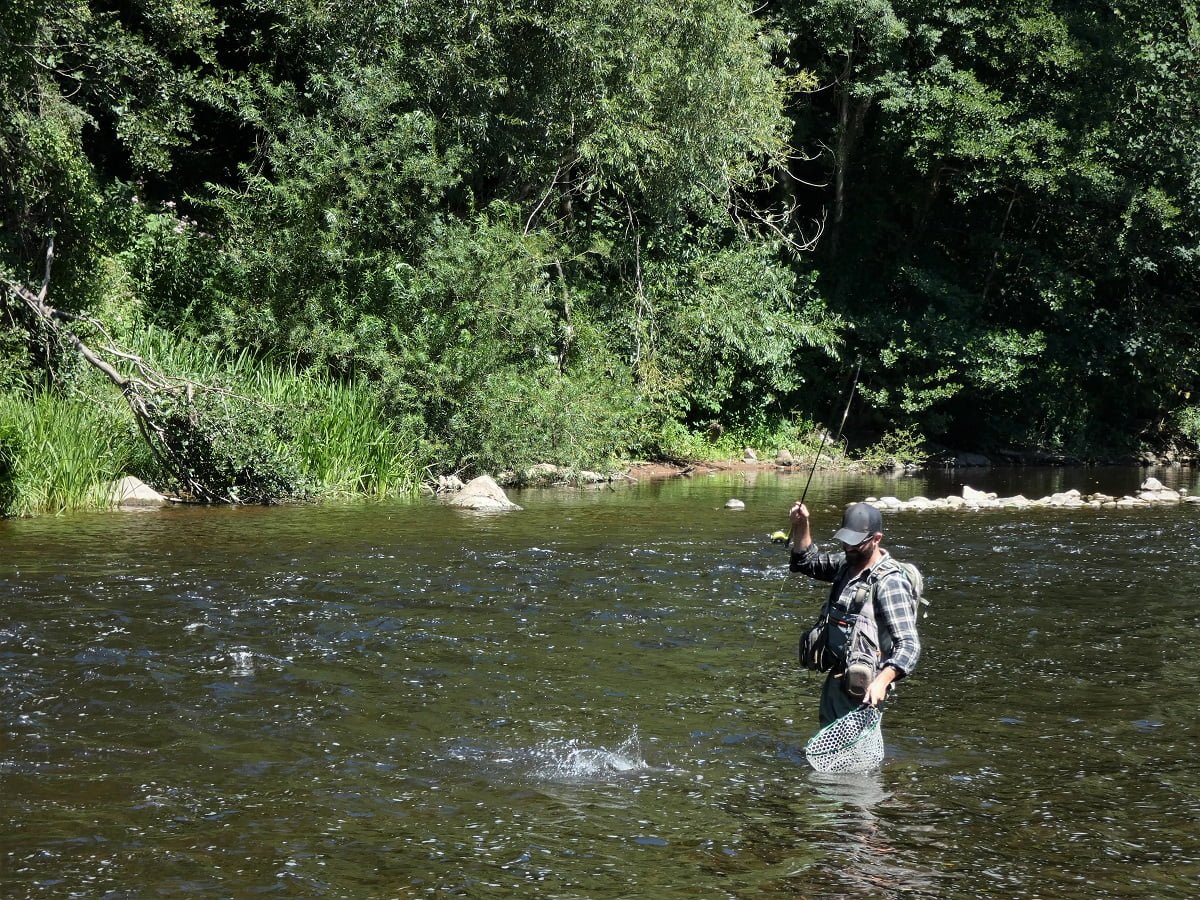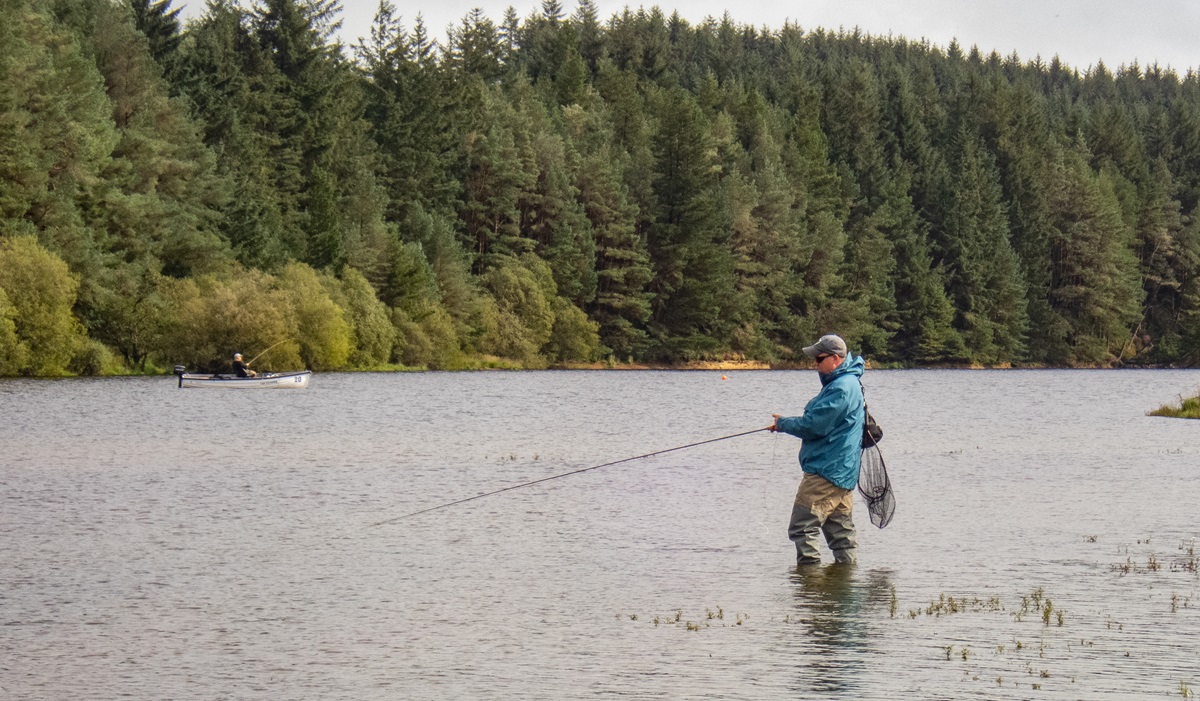Euro Nymphing – An easy way to get into river fly fishing
Euro Nymph fly fishing has gained popularity among trout anglers in recent years as an effective and exciting way to catch fish on rivers.
Euro Nymphing involves using a long, lightweight rod and a specialized nymphing technique to present weighted flies directly to the trout’s feeding zone, which is often close to the bottom of the river.
A modern, fun and efficient way of fishing for trout and grayling, Euro Nymphing is becoming a common sight on Welsh rivers, since it is very productive and unlike traditional fly fishing is easy to pick up and learn, often with just a few hours of practice. This makes it the perfect method for newcomers to river trout fishing to try.
In this article we explain how you can get into Euro Nymphing, covering tackle and techniques needed to catch fish.
Below: A Welsh brown trout captured while Euro Nymph fishing.
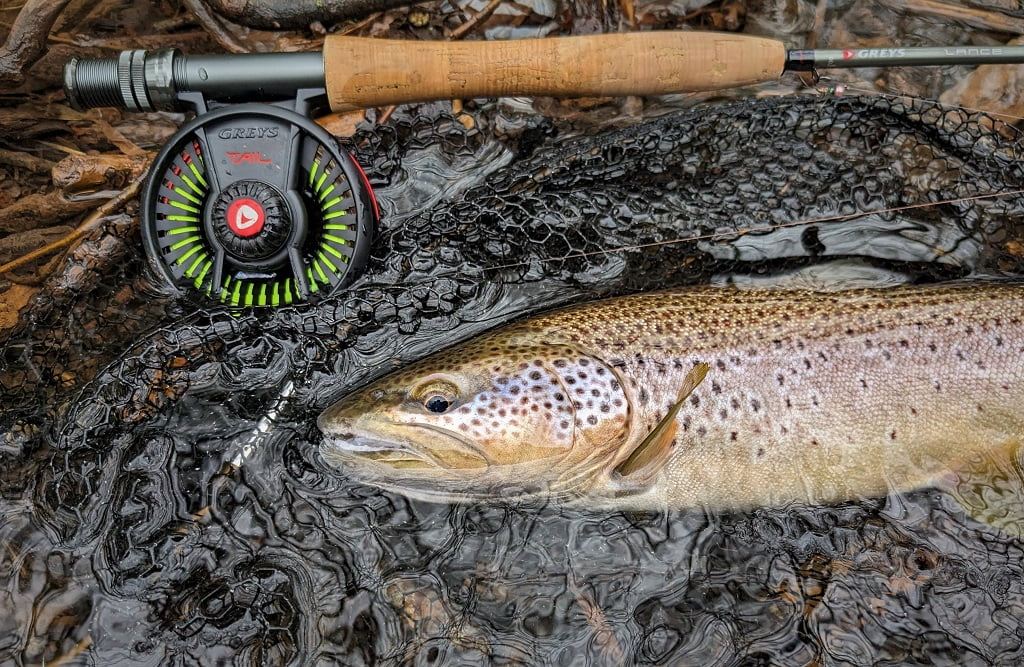
Tackle and Equipment
The equipment used for Euro Nymphing is specifically designed to maximize sensitivity and minimize drag (drag is unnatural movement of your flies). Anglers use a fly rod that is typically 10 to 11 feet long and extremely lightweight. These long rods provide excellent line control and sensitivity, allowing anglers to feel even the slightest of takes.
These rods are usually rated for a 2, 3 or 4 weight line, with the most popular ‘all-round’ choice perhaps being a 10ft 3 weight rod. Euro Nymph rod prices start at around £80 for a Shakespeare Oracle 2, so can be quite inexpensive. Full Euro Nymph ‘ready to fish’ kits are also available, from manufacturers such as Greys.
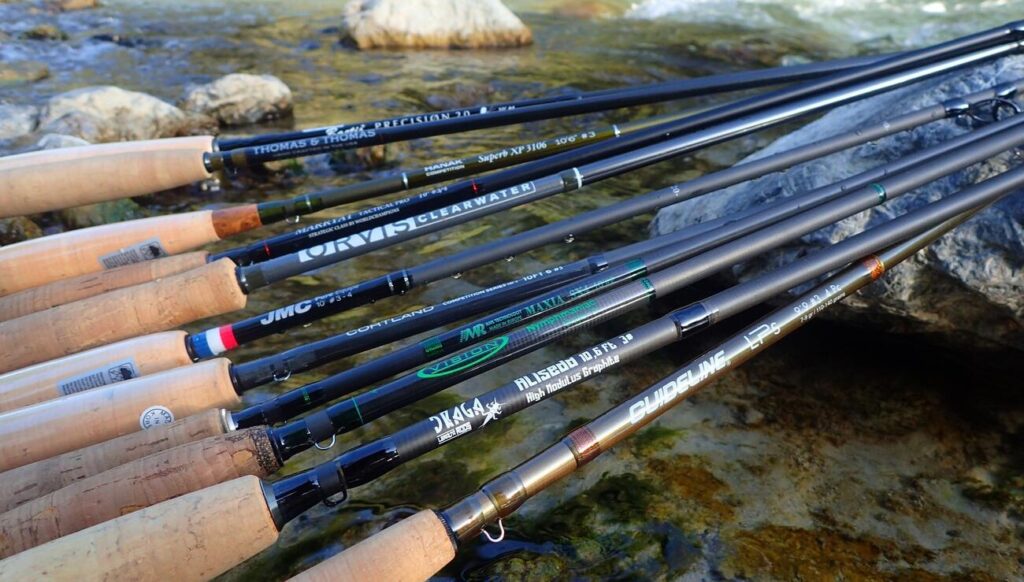
The reel for this type of fishing is usually a simple design with a large arbour to hold plenty of backing and reduce coiling of the line. A reel should be selected to balance the rod, typically a #3-4 size. However a slightly heavier, oversized reel can sometimes be beneficial with the longer Euro Nymph rods, since the rod should not feel tip heavy in the hand.
A drag system on the reel is optional, but handy to have. A ‘closed cage’ design is a great help, since this can stop thinner lines from slipping out of the reel cage and tangling up. There are plenty of good reels available from Greys, Hardy, Vision and many others with these features.
Below: 10′ #3 Euro nymph rod and ‘closed cage’ fly reel. The reel is fitted with a Euro Nymph fly line.
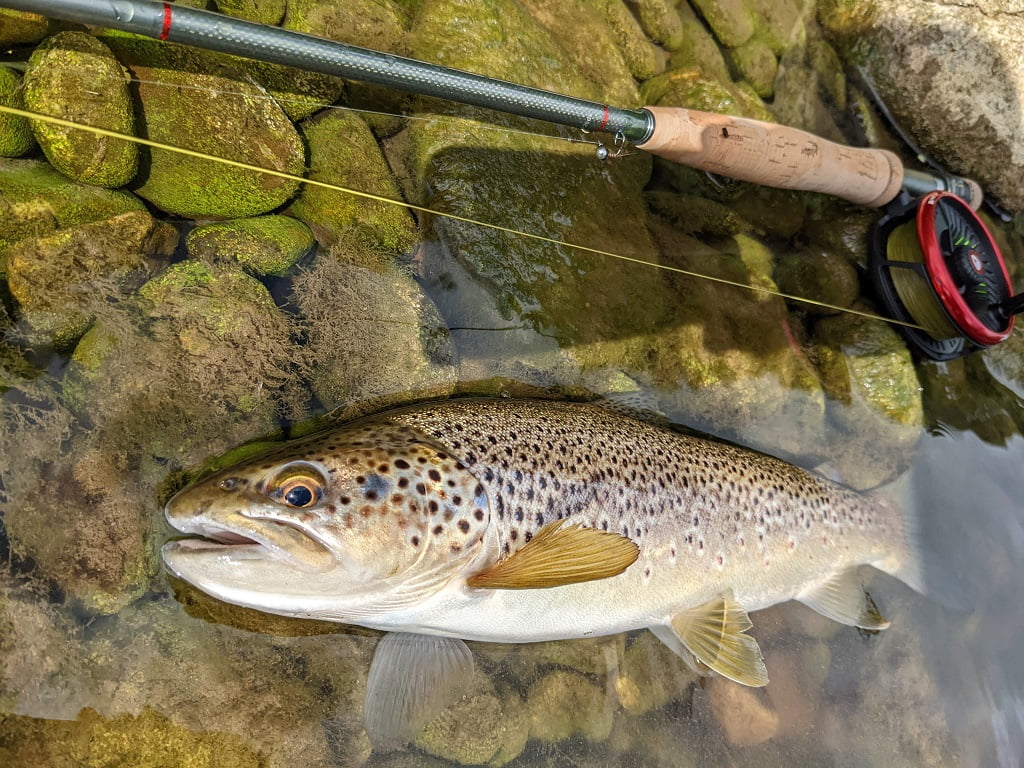
Lines and rigs
On the subject of lines and rigs there are a couple of popular options.
1. Euro Nymph fly line
These specialist fly lines are very thin, in order to reduce drag and line sag. They are nice to handle in cold conditions and are often low-stretch to aid bite detection. Options are available from brands such as Airflo, Rio, Troutline and Vision.

A length of coloured indicator material is usually added to the Euro Nymph line, this is typically 3-4 feet, to which is added 6 foot of tippet. 2 flies are usually attached to the tippet, the heaviest one on the point and the dropper fly about 20 inches above it.
Tippet is normally thin diameter to help the flies sink faster, usually 3lb or 4lb fluorocarbon, from 6x to 5x. 2mm tippet rings are ideal for connecting the indicator material to your tippet.
This set up is one of the best for beginners, as it is very easy to handle, especially in cold conditions or wet weather, as it is less prone to sticking to the rod blank or wrapping around the tip if it rains. This system is also competition legal. Downside is there is usually a slight bit of sag in the system when compared to other set ups, so it is not as sensitive to delicate takes using light flies.
2. Mono Line or French Leader
You can simply use monofilament fishing line instead of any fly line, this is very sensitive and easy to cast. Simply add mono line to a fly reel filled out with backing, no need for a fly line at all here. The amount to spool up can be from 30-50 yards, usually from 6lb strength up to 15lb. It is nicer to handle monofilament line in thicker diameters, but thinner mono is more sensitive and casts a little easier. Drennan Specimen camo line or Maxima Chameleon is a good choice, as it is supple, but almost anything will do.
To the end of the mono simply connect a 10 to 18 inch section of indicator material, then a 6 – 7 foot leader of light 3lb to 4lb fluorocarbon tippet with two flies, using tippet rings to connect everything but the flies and dropper.
A ‘French leader‘ is another option – this is simply an extra long tapered monofilament leader, usually 9m in length, to which you add indicator material and tippet as above. The slight advantage of the French leader is the taper aids better turn over with smaller flies, and the thicker ‘butt end’ is a bit nicer in the hand to hold.
For indicator material there are many choices, from Rio, Cortland, Vision, Sempe and many others. These are often 2 tone colours, so easy to pick out on the water. You can also rub the leader with fluorescent Skafars Neon wax so you can see it better.
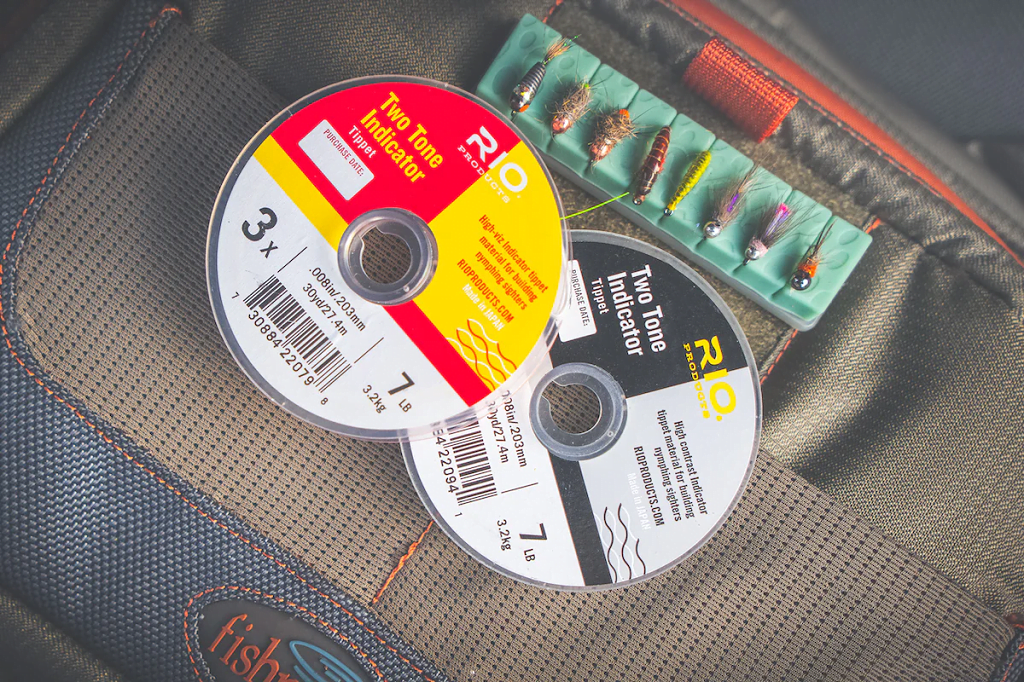
Get the flies right
One of the keys to Euro Nymphing is the use of specialized nymphing flies. These patterns are often heavily weighted with tungsten beads or other materials, allowing the angler to get the fly down quickly to the feeding zone.
The flies themselves are often small (size 12 to 20) and tied in a variety of patterns to imitate the different types of insects that trout feed on in the river, as well as being simply attractors that fish take out of curiosity or aggression. Importantly they are often tied on jig hooks, so they fish upside-down. This helps prevent them from snagging up on the bottom.

Euro Nymphing involves fishing upstream with a series of weighted flies that are directly attached to the leader. The angler casts the flies upstream, using their weight to load the rod slightly to help propel the flies. After they land, allow them to drift downstream as they sink, while maintaining contact with the flies. This is accomplished by keeping the line tight and following the drift of the flies with the rod tip. Keep the tip held high, with the indicator material just above the surface.
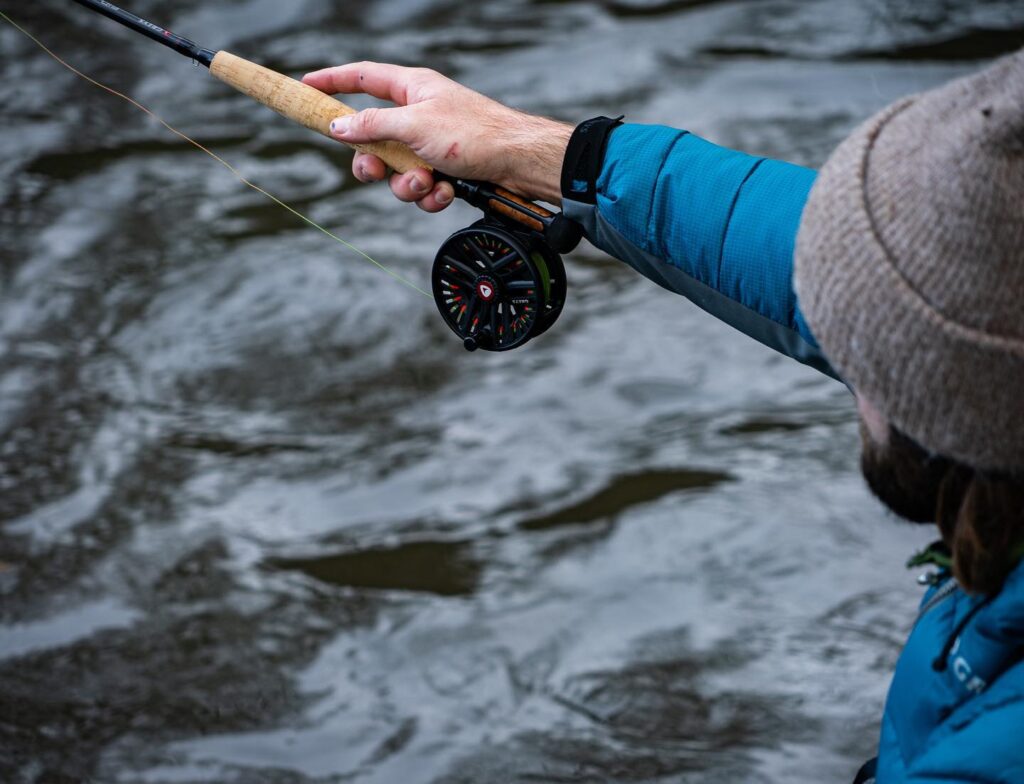
As the flies drift downstream, the angler then feels for any bumps or takes from the trout, and can also react to the indicator moving suddenly or stopping. When a trout takes the fly, the angler sets the hook by lifting the rod tip and quickly retrieving any slack line. The long rod and lightweight setup allow for quick hook sets and an excellent fight with the trout.
Advantages of Euro Nymphing
One of the advantages of Euro Nymphing is its ability to effectively fish deep pocket water and faster runs that are difficult to reach with traditional fly fishing methods. This technique also allows anglers to cover a large amount of water quickly and efficiently, increasing the chances of catching fish.
In conclusion, Euro Nymph fly fishing for trout on rivers is a highly effective and exciting method of fly fishing that has gained popularity among anglers in recent years. With the right equipment and specialized nymphing flies, anglers can effectively fish holding areas that other fly fishing methods are not suited for. As a method it is very easy to learn, even if you have no fly fishing experience, since complex long distance casts are not required.
Wales has many streams and rivers that are perfectly suited for Euro Nymph, so why not give it a go on your next trip? Find rivers to go fishing on in Wales HERE.
Rod Licence Reminder: To go freshwater fishing in Wales you will need to purchase a Natural Resources Wales (NRW) or Environment Agency (EA) fishing rod licence, in addition to a day ticket or season membership for the venue. You can easily purchase your freshwater licence HERE.
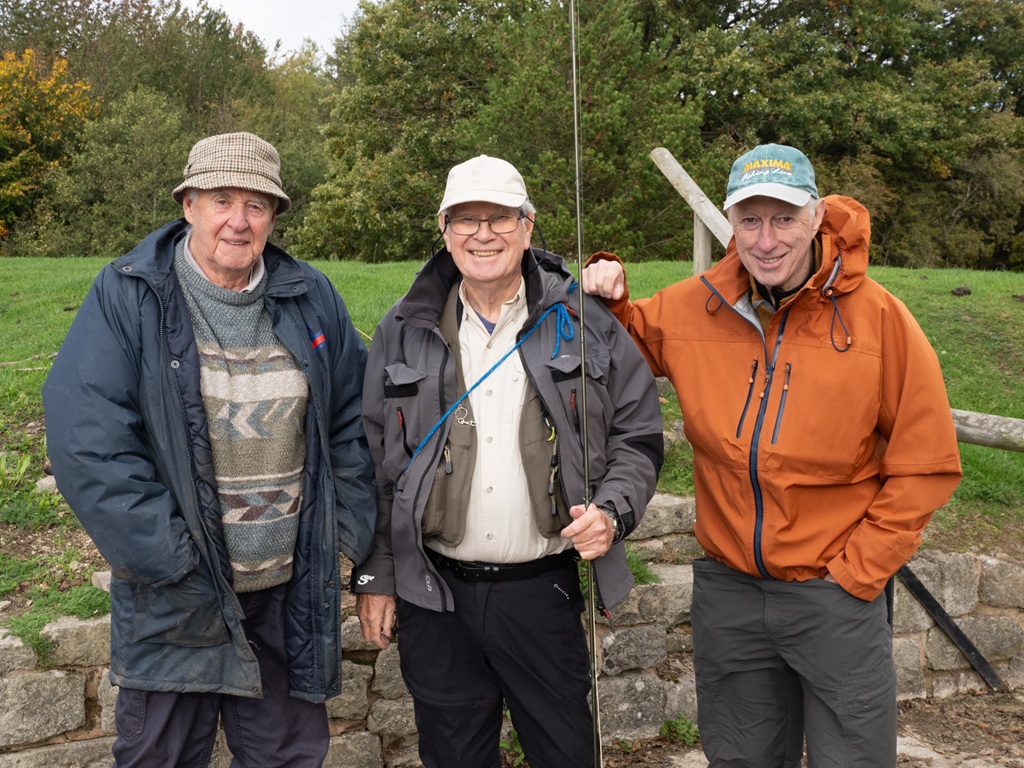
Take a Friend Fishing is Back! Take someone you know fishing for FREE this Christmas and New Year
Calling all Anglers – Take someone you know fishing for FREE between Saturday 20th December 2025 and Sunday 4th of…
Read More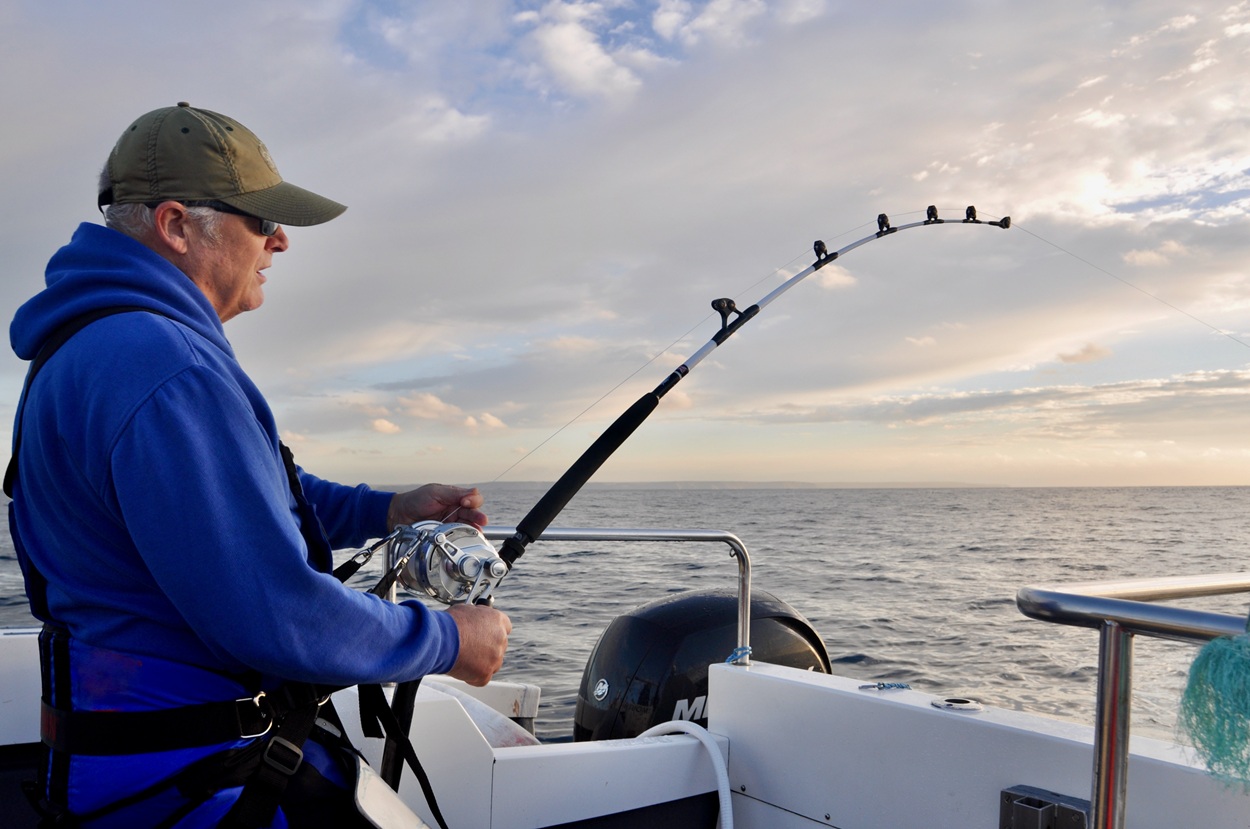
Tuna Sport Fishing Wales
Dave Lewis reports on the emergence of a rod and line tuna fishery off Welsh coasts; a huge draw for…
Read More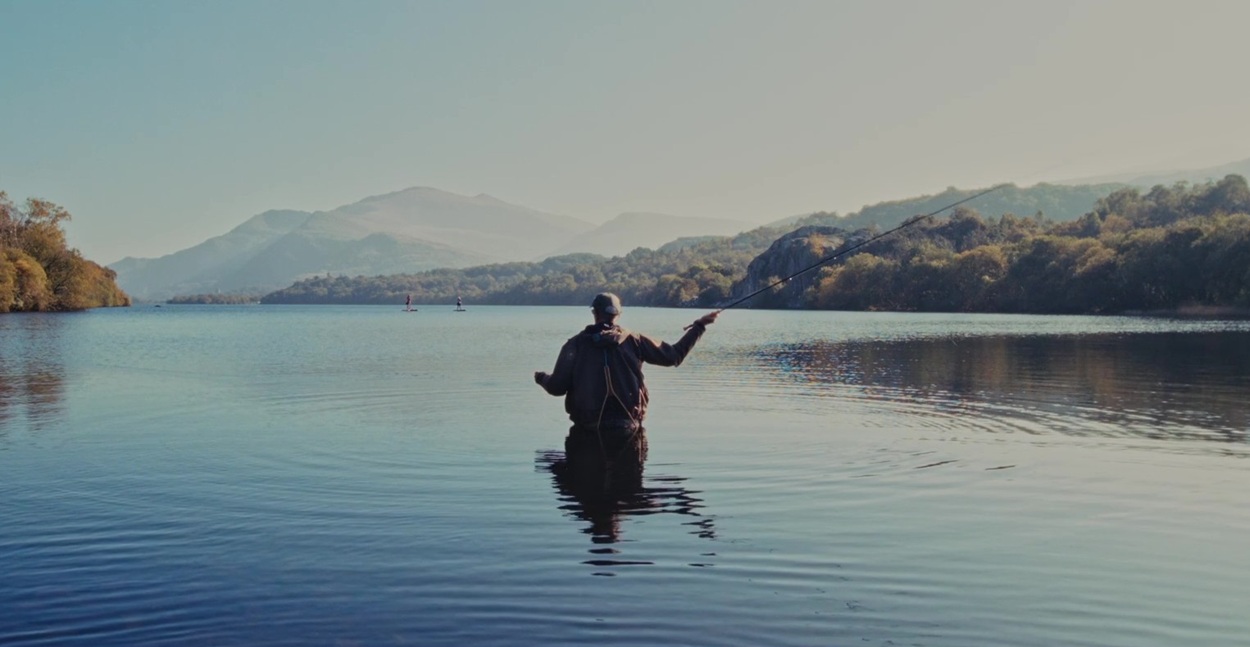
Am ein bywydau 'About our lives' - Cymdeithas Pysgota Seiont Gwyrfai & Llyfni VIDEO
A Welsh language film (Cymraeg) with English subtitles. We’re pleased to present: Am ein bywydau – a film…
Read More
